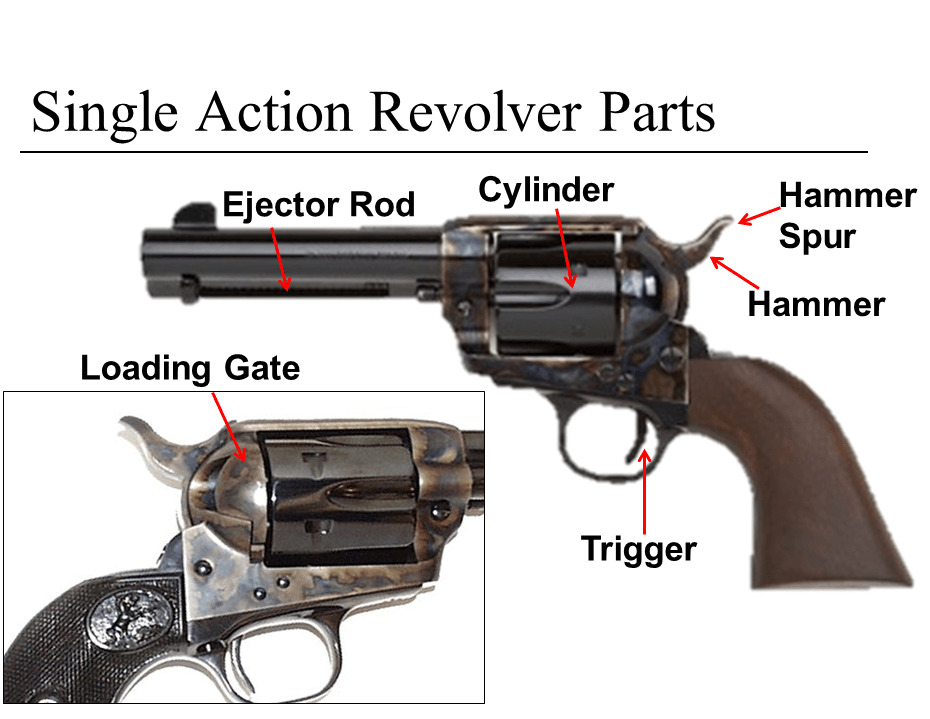Below are the main parts of a revolver:

Below are the parts of a revolver frame:

Below are the parts of a revolver barrel:
Muzzle – Very tip of the barrel
Rifling – Is made by the lands and grooves that engrave the bullet to give it spin as it travels down the barrel. This increases accuracy, think of throwing a spiral with a football.
Chamber – Chambers are meant to house a cartridge, when the revolver is operated, each chamber will turn to line up with the firing mechanism.

Below are the other parts to a double action revolver:
Trigger – When the trigger is pulled, it activates the hammer, which in turn causes the firing pin to strike and fire the cartridge.
Cylinder – Holds cartridges in individual chambers arranged in a circular pattern. Each time the hammer moves to the rear, the cylinder turns and brings a new chamber in line with the barrel and the firing pin.
Cylinder Release latch – Releases the cylinder and allows it to swing out so that cartridges can be loaded and unloaded.
Below are the other parts to a single action revolver:

Single Action – Trigger performs only one action, releases the hammer, firing the pistol
Double Action – Trigger performs two tasks. Cocks and releases the hammer, firing the pistol.
How to unload a revolver:
– Push the cylinder release. – Swing the cylinder out of the revolver. – Examine each chamber for ammunition. – Look into each chamber. – Feel the rear of the cylinder. – If cartridges are present, point the revolver up and press down sharply on the ejector rod.
Below is an unloaded and loaded revolver. (The unloaded revolver is on the right)

Differences in revolvers:
Single-action – Requires manually cocking hammer before pulling trigger – Reload requires pushing out fired cases one at a time
Double-action – Trigger cocks then releases hammer – Cylinder swings out to allow rapid reloading

Very informing.